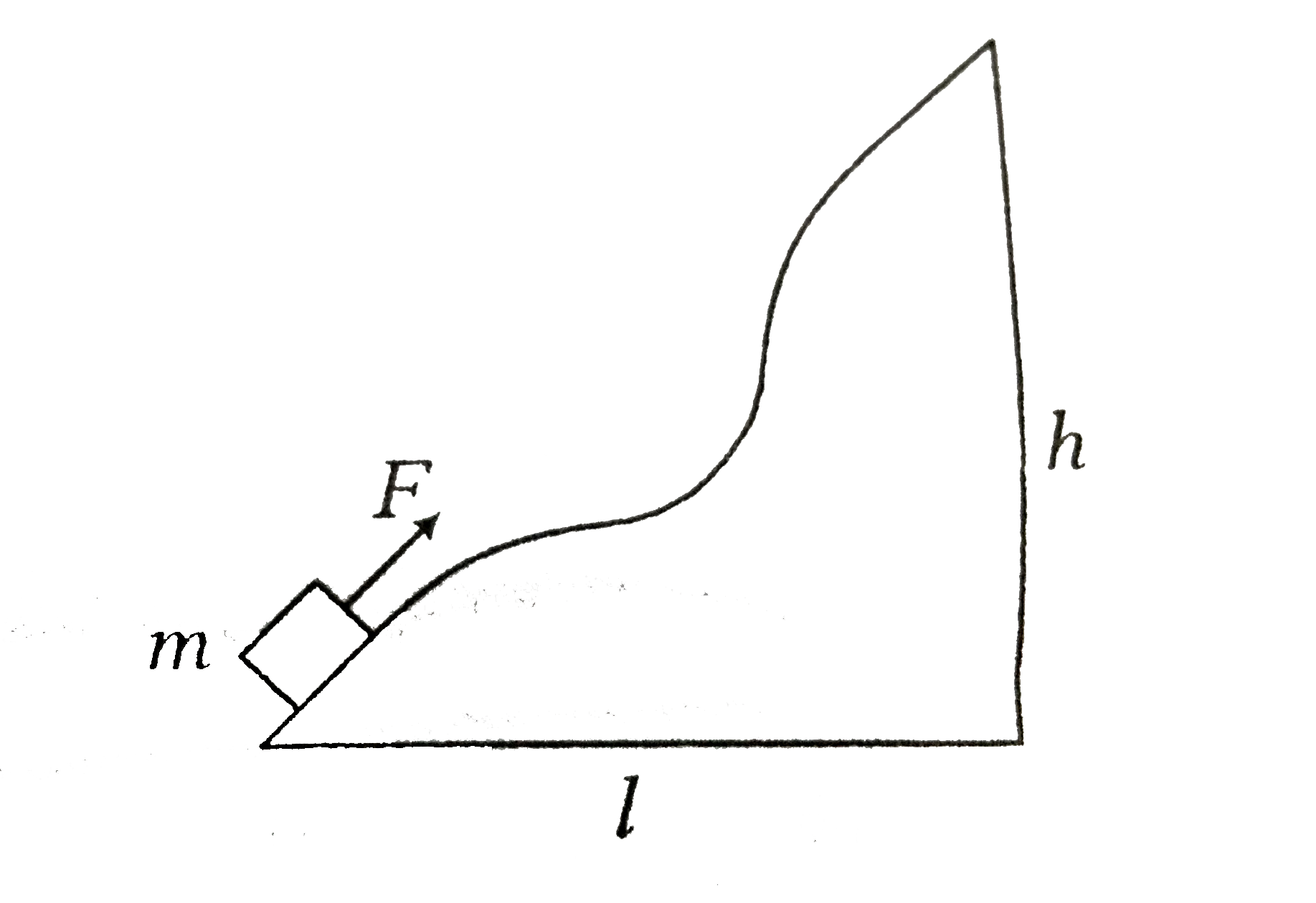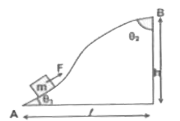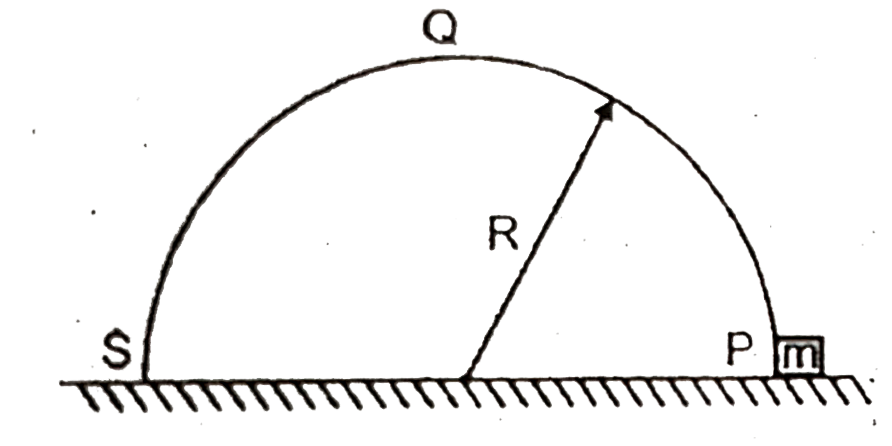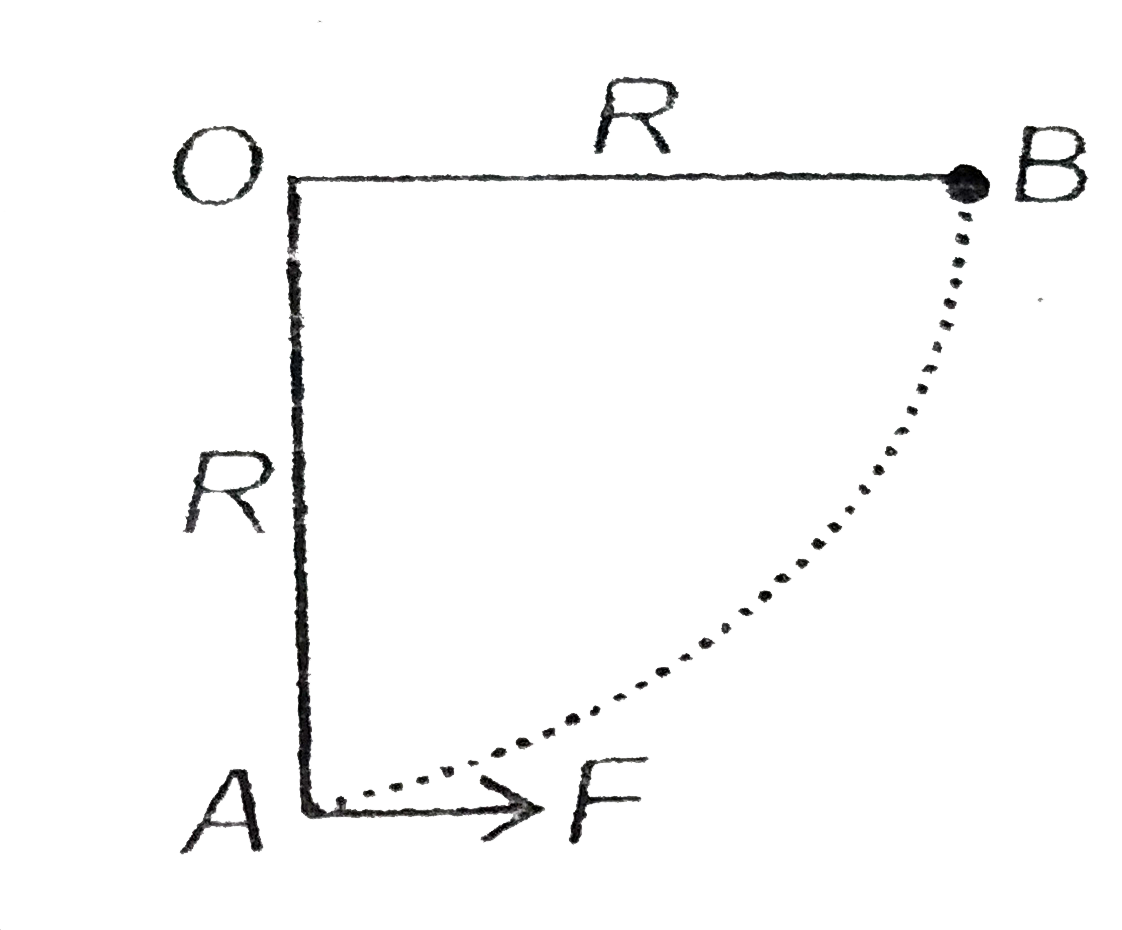A body of mass M was slowly hauled up a rough hill by a force F which at each point was directed along a tangent to the hill. Work done by the force

(a) Is independent of the shape of trajectory
(b) Depends upon the vertical component of displacement but is independent of horizontal component
(c) Depends upon both the components
(d) Does not depend upon the coefficient of friction
The correct Answer is:A, C
If the body slips over a rough surface such that normal reaction of the surface has to balance only the normal component of weight of the body, then the energy lost against friction depends only upon the horizontal component of displacement and is equal to μmgx. It does not depend upon the shape of the surface.
If the vertical component of displacement of the body is equal to y, increase in its gravitational potential energy will be equal to mgy.
Hence, total work done by the force will be equal to μmgx+mgy.
Hence, options (a) and (b) are correct.
Topper's Solved these Questions
- WORK, POWER & ENERGYBOOK - CENGAGE PHYSICS ENGLISHCHAPTER - WORK, POWER & ENERGYEXERCISE - Linked Comprehension
55 Videos
- WORK, POWER & ENERGYBOOK - CENGAGE PHYSICS ENGLISHCHAPTER - WORK, POWER & ENERGYEXERCISE - Integer
14 Videos
- WORK, POWER & ENERGYBOOK - CENGAGE PHYSICS ENGLISHCHAPTER - WORK, POWER & ENERGYEXERCISE - Single Correct
100 Videos
- VECTORSBOOK - CENGAGE PHYSICS ENGLISHCHAPTER - VECTORSEXERCISE - Exercise Multiple Correct
5 Videos
Similar Questions
A body of mass m was slowly pulled up the hill by a force F which at each point was directed along the tangent of the trajectory. All surfaces are smooth. Find the work done by this force

View SolutionA body of mass m was slowly hauled up the hill as shown in the fig. by a force F which at each point was directed along a tangent to the trajectory. Find the work performed by this force, if the height of the hill is h, the length of its base is I and the coefficient ot friction is μ.
 .
.
View SolutionA body of mass m was slowly pulled up the hill by a force F which at each point was directed along the tangent of the trajectory. All surfaces aresmooth. Find the work performed by this force.

View SolutionA block of mass m is slowly carried on a inclined plane by a force F which always acts along the tangent to the plane. If the co-efficient of friction between the block and incline be μ, then work done by force of friction while carrying block from bottom of the plane to the top will be :

A. dependent on the actual shape of the path between point A and B.
B. will have a total positive value
C. will not change if force F is not applied along the tangent to the plane always.
D. independent of the actual shape of the path between points A and B.
View SolutionA small block of mass m os takes slowly up a fixed hemisphere from P to Q and then slowly down along its surface from Q to S by force F, which at each point of the surface, is tangential to the surface. If the coefficient of friction is μ, then the work performed by the force F in taking the block from P to S along the hemispherical surface of radius R is :

View SolutionA block of mass m is taken from A to B under the action of a constant force F. Work done by this force is

View SolutionA block of mass m is pulled slowly by a minimum constant force on a rough (μ) horizontal surface through a distance x. Find work done by force F.
View Solution
A block of mass 1 kg is pulled slowly along the curve path ACB by a tangential force as shown in figure. The magnitude of work done by the frictional force when the block moves from A to B is
View SolutionA force F is applied on a block of mass M. The block is displaced through a distance d in the direction of the force. What is the work done by the force on the block? Does the internal energy change because of this work?
View SolutionA body of mass m falls down through a height h. Obtain an expression for the work done by the force of gravity
View Solution
